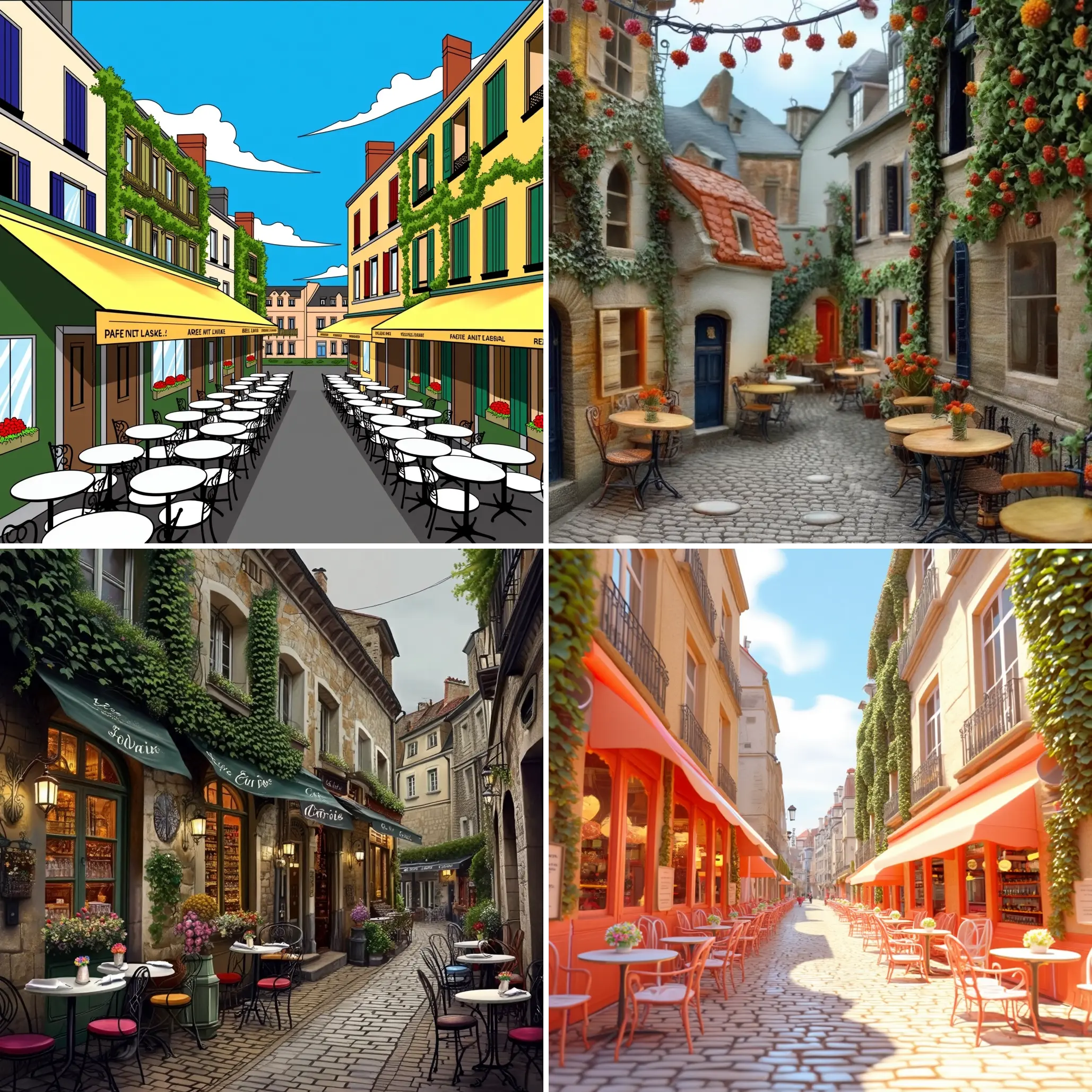ComfyUI Node: LLMSampler
LLMSampler
CategoryVLM Nodes/LLM
How to Install VLM_nodes
Install this extension via the ComfyUI Manager by searching for VLM_nodes- 1. Click the Manager button in the main menu
- 2. Select Custom Nodes Manager button
- 3. Enter VLM_nodes in the search bar
Visit ComfyUI Online for ready-to-use ComfyUI environment
- Free trial available
- 16GB VRAM to 80GB VRAM GPU machines
- 400+ preloaded models/nodes
- Freedom to upload custom models/nodes
- 200+ ready-to-run workflows
- 100% private workspace with up to 200GB storage
- Dedicated Support
LLMSampler Description
Facilitates AI art generation sampling with advanced ML models for high-quality outputs, simplifying the process for artists.
LLMSampler:
The LLMSampler node is designed to facilitate the sampling process in AI art generation, leveraging advanced machine learning models to produce high-quality outputs. This node is particularly useful for artists who want to generate images or other media by sampling from a latent space defined by a pre-trained model. The LLMSampler node simplifies the complex process of sampling, making it accessible to users without a deep technical background. By using this node, you can achieve more consistent and visually appealing results, as it optimizes the sampling process to better align with the model's capabilities and your artistic goals.
LLMSampler Input Parameters:
model
This parameter specifies the pre-trained model to be used for sampling. The model defines the latent space from which samples will be drawn, significantly impacting the quality and style of the generated output. Ensure you select a model that aligns with your artistic vision.
seed
The seed parameter is an integer value used to initialize the random number generator. This ensures reproducibility of the results. The default value is 0, with a minimum of 0 and a maximum of 0xffffffffffffffff. Changing the seed will produce different outputs even with the same model and other parameters.
steps
This parameter defines the number of sampling steps to be performed. More steps generally lead to higher quality outputs but will take longer to compute. The default value is 20, with a minimum of 1 and a maximum of 10000.
cfg
The cfg (Classifier-Free Guidance) parameter is a float value that controls the strength of the guidance applied during sampling. Higher values result in outputs that more closely follow the conditioning inputs. The default value is 8.0, with a range from 0.0 to 100.0, adjustable in steps of 0.1.
sampler_name
This parameter allows you to choose the specific sampling algorithm to be used. The available options are defined by the model and can significantly affect the output's style and quality.
scheduler
The scheduler parameter specifies the scheduling algorithm to be used during sampling. Different schedulers can impact the smoothness and coherence of the generated output.
positive
This parameter is used to provide positive conditioning inputs, which guide the sampling process towards desired features or styles.
negative
The negative parameter allows you to provide negative conditioning inputs, which help steer the sampling process away from undesired features or styles.
latent_image
This parameter specifies the latent image to be used as the starting point for sampling. It defines the initial state of the latent space from which the model will generate the output.
denoise
The denoise parameter is a float value that controls the amount of denoising applied during the sampling process. The default value is 1.0, with a range from 0.0 to 1.0, adjustable in steps of 0.01. Lower values result in less denoising, preserving more of the original latent image's details.
LLMSampler Output Parameters:
LATENT
The LATENT output parameter provides the final latent space representation after the sampling process. This can be further processed or directly converted into the desired output format, such as an image.
LLMSampler Usage Tips:
- Experiment with different
seedvalues to explore a variety of outputs from the same model and settings. - Adjust the
stepsparameter to balance between quality and computation time; more steps generally yield better results. - Use the
cfgparameter to fine-tune the influence of conditioning inputs, helping you achieve the desired artistic effect. - Select appropriate
sampler_nameandscheduleroptions to match the style and quality requirements of your project.
LLMSampler Common Errors and Solutions:
"Model not found"
- Explanation: The specified model could not be located.
- Solution: Ensure that the model name is correct and that the model is properly installed.
"Invalid seed value"
- Explanation: The seed value provided is out of the acceptable range.
- Solution: Use a seed value within the range of 0 to 0xffffffffffffffff.
"Steps out of range"
- Explanation: The number of steps specified is either too low or too high.
- Solution: Adjust the steps parameter to be within the range of 1 to 10000.
"CFG value out of range"
- Explanation: The cfg value provided is outside the acceptable range.
- Solution: Ensure the cfg value is between 0.0 and 100.0.
"Invalid latent image"
- Explanation: The latent image provided is not compatible with the model.
- Solution: Verify that the latent image is correctly formatted and compatible with the chosen model.
LLMSampler Related Nodes
RunComfy is the premier ComfyUI platform, offering ComfyUI online environment and services, along with ComfyUI workflows featuring stunning visuals. RunComfy also provides AI Playground, enabling artists to harness the latest AI tools to create incredible art.





